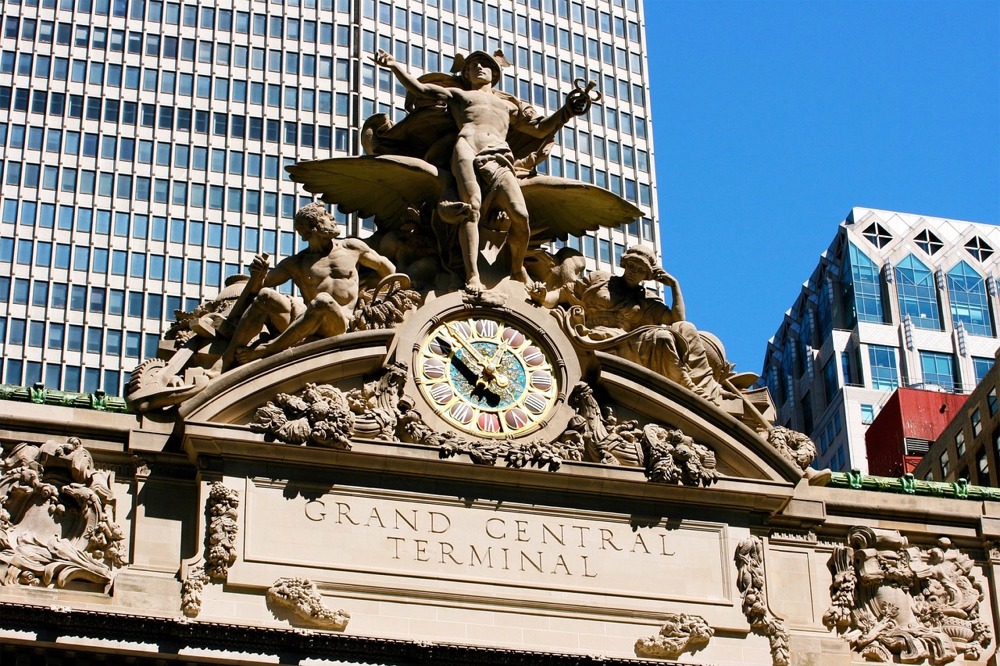The Glory of Commerce Statue
Home > New York State Photographs > New York > Transportation / The Glory of Commerce Statue

The tall and majestic "Glory of Commerce" statue atop the 42nd Street facade of Grand Central Terminal stood proud in the early afternoon warmth. Every detail of its exquisite ornamentation shone brilliantly, boosted by the warm light that caused tantalizing shadows to flit across its body. Mercury with his wings and caduceus was a fitting embodiment of commerce, communication, and travel. His sidekicks, Hercules and Minerva, emanated their own virtues and grandeur. The opulent Tiffany clock at Mercury's feet ticked on steadily, keeping track of time in the heart of Midtown Manhattan.
Glory of Commerce / Transportation
The statue that adorns the top of Grand Central Terminal in New York City is commonly known as "The Glory of Commerce," although it is also referred to as "Transportation." It is one of the most iconic and recognizable features of the terminal, adding to the grandeur and artistic beauty of the building.
Key points about "The Glory of Commerce" statue:
Location and artist
The statue is located on the southern facade of Grand Central Terminal, facing 42nd Street. It was designed by French sculptor Jules-Félix Coutan. Coutan was commissioned by the architects of the terminal, Reed and Stem, and Warren and Wetmore, to create the sculpture for the building's construction, which took place in the early 20th century.
Theme
The central theme of the statue is "Commerce" or "Transportation," which symbolizes the integral role that transportation and commerce played in the development of New York City and the United States. The statue serves as a tribute to the city's growth and prosperity, driven in large part by the expansion of railroads and trade.
Figurative representations
"The Glory of Commerce" features a group of three sculptural figures atop a triumphal arch (the arch being on the main facade of Grand Central Terminal). At the center stands the figure of Mercury, the Roman god of financial gain, commerce, eloquence, messages, communication, travelers, luck, etc. He is depicted with wings on his helmet, symbolizing speed and swiftness in transportation and communication. In his right hand, he holds a caduceus, the staff entwined by two serpents, which is a traditional attribute of Mercury.
Flanking figures
On either side of Mercury there are two figures, Hercules famous for his strength and for his many far-ranging journeys and Minerva Roman Goddess of justice, law, victory, wisdom, and the sponsor of arts, strategy and trade.
Symbolism and grandeur
The statue is not only an artistic masterpiece but also a representation of the significance of Grand Central Terminal as a major transportation hub and a symbol of the city's progress and achievements.
Restoration
Over time, the statue suffered from weathering and pollution. In the late 1990s, Grand Central Terminal underwent a massive restoration project, which included cleaning and repairing "The Glory of Commerce" and other decorative elements, restoring them to their original splendor.
Today, "The Glory of Commerce" statue continues to be a prominent symbol of Grand Central Terminal's historical and architectural significance and a testament to the enduring importance of transportation and commerce in the city's past and present.


